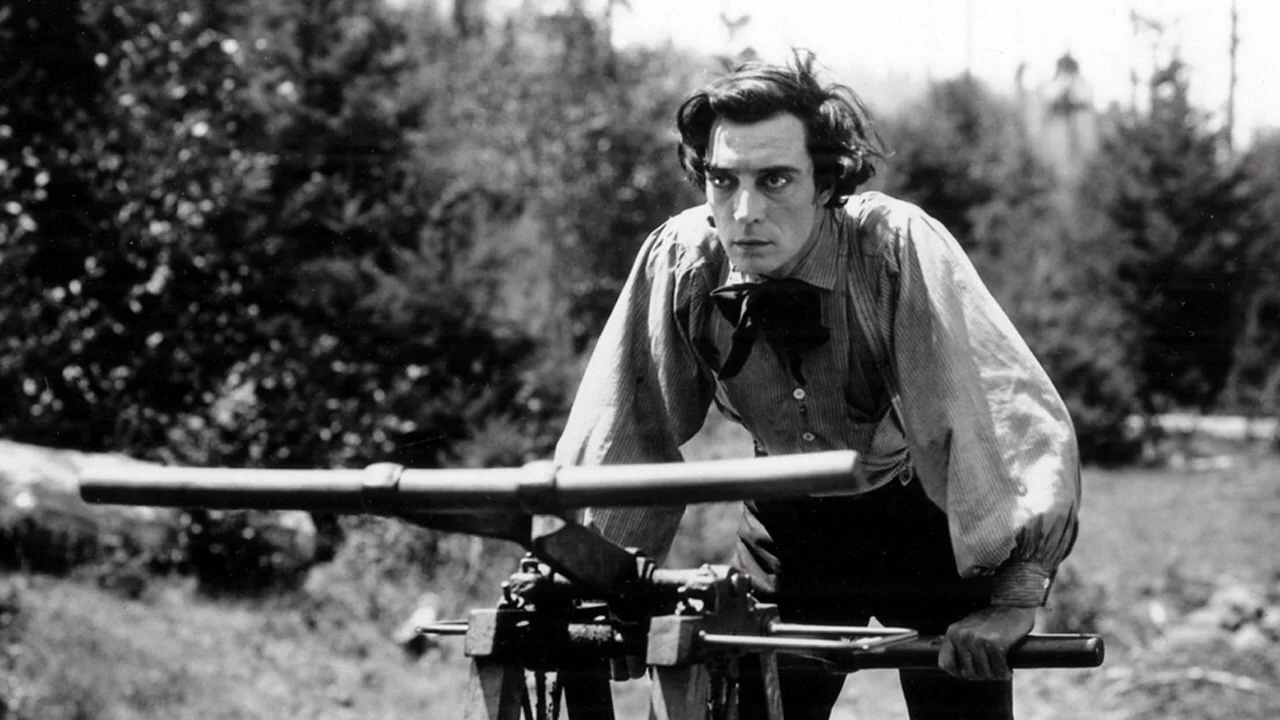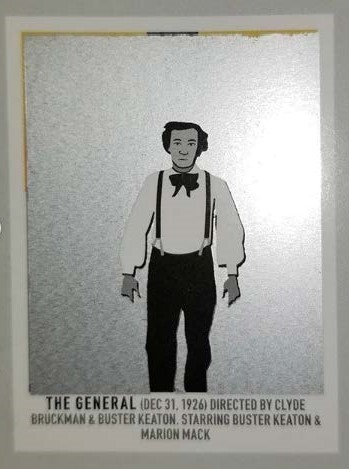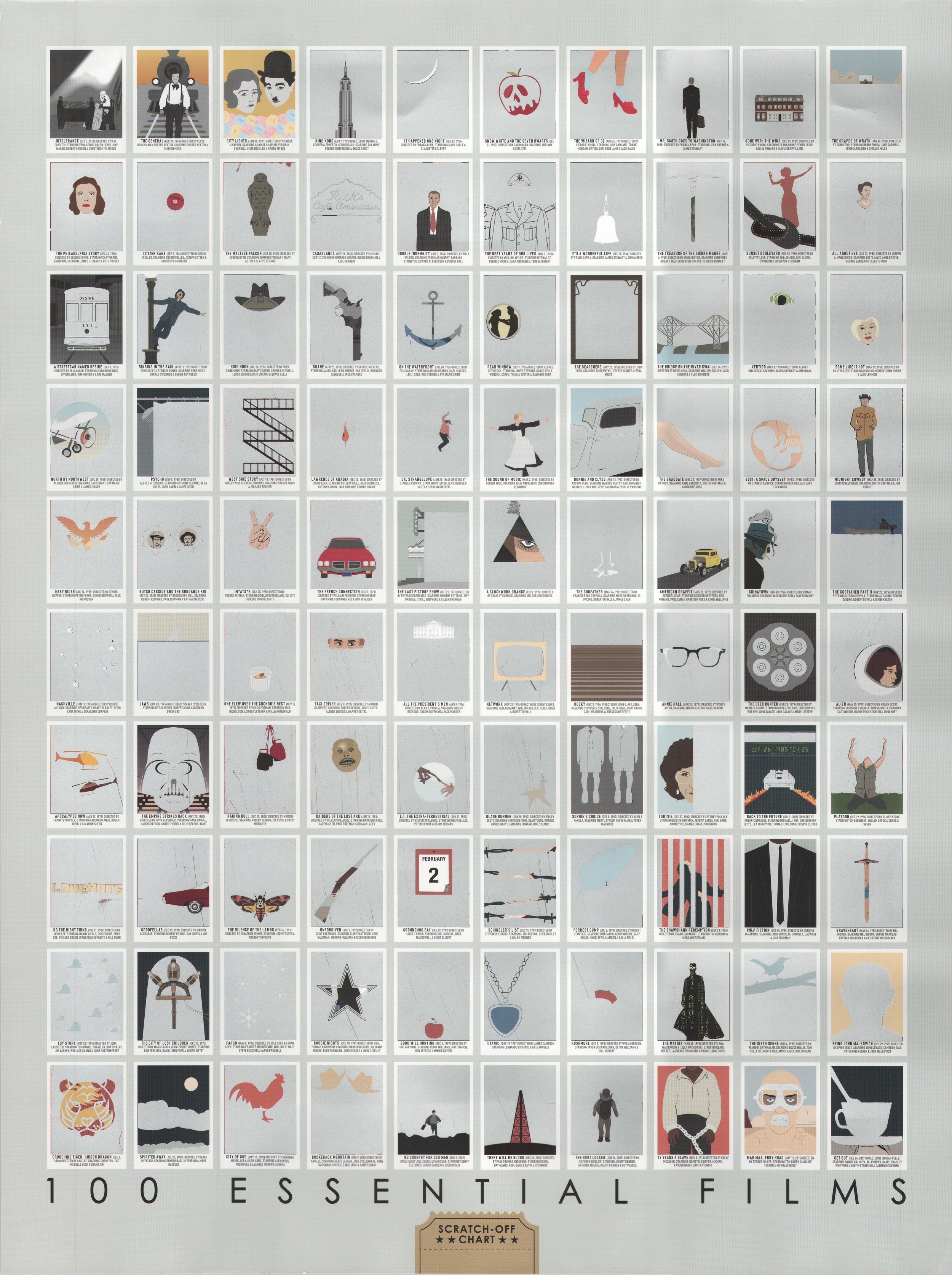Here’s the second entry in my 100 Essential Films series. If you missed the first one, you can find the explanation for what I’m doing here. Film number two is The General from 1926. Directed by Buster Keaton & Clyde Bruckman, and starring Keaton in arguably his most iconic role, The General is based on an actual train heist that took place during the Civil War. Just like Intolerance, I borrowed a Blu-ray edition from my local library. The disc is a 2009 edition produced by Kino. Just like with Intolerance, the restoration work here is gorgeous.
********************************
before scratch-off
The General (1926)
dir. Clyde Bruckman & Buster Keaton
Rated: N/A
image: Pop Chart Lab
Upon any amount of reflection on Buster Keaton’s seminal 1926 silent comedy The General, it becomes obvious just how much exacting precision and painstaking preparation Keaton must have demanded to make the whole thing work. The reason it does take reflection, though, is because Keaton makes every last jaw-dropping stunt – almost all of them staged for maximum comedic effect – look so damn easy. Keaton and his co-director, Clyde Bruckman, crafted an action/comedy masterpiece that has remained vital for a century, and will undoubtedly still be just as vital a century from now.
The film is based on the true Civil War story detailed in the 1863 book The Great Locomotive Chase by Union soldier William Pittenger. Union forces – including Pittenger – succeeded in stealing a Confederate train and destroying miles of enemy railroad track and telegraph wires as they moved through the south. Keaton plays Johnnie Gray, the engineer whose beloved locomotive, The General, is the one stolen. Johnnie is spurned by his other true love, his fiancée Annabelle Lee, when his rejected enlistment attempt (as a railroad engineer, his civilian job is too important to the war effort) is mistaken for a reluctance to serve. When the Union soldiers steal The General, Johnnie will stop at nothing to get it back.
It’s hard to write about comedies without simply devolving into a series of descriptions of the funniest bits. There is a similar challenge with action movies. The focus of action movies – the stunts – must be seen to be truly appreciated. With The General, the elaborate stunts, which are awesome in their own right, are constructed to also get big laughs. Keaton’s impeccable timing, both in front of and behind the camera, is without match. He puts just as much care into crafting the bits that are less physically demanding as he does with the most complex and dangerous ones.
Early in the film, when Johnnie is trying in vain to enlist in the Confederate Army, he keeps getting back in line, using different ploys in an attempt to go unnoticed. It’s low-stakes silliness; the bit relies on a series of double-backs and ruses to convince the man handing out the marching orders that he is a different person each time. This low-stakes approach and the simplicity (or rather our perception of it as simple) is what makes it so hilarious.
Later in the film, though, in harrowing sequences involving moving trains and real people performing practical stunts, it’s impossible to mistake Keaton’s work for anything other than the meticulous planning of a genius.
Keaton’s Johnnie pursues the Union soldiers and The General in another engine he’s commandeered for the chase. The men he’s following throw down railroad ties on the tracks in an effort to derail Johnnie. In a wondrous bit of action, Johnnie climbs down from his train to remove the first railroad tie. He has trouble getting it loose and dislodges it just as his engine comes up behind him. Johnnie is forced to hop onto the engine’s cowcatcher with the railroad tie cradled in his arms. In a hilarious, riveting, and triumphant moment, Johnnie throws the railroad tie at exactly the right second, in exactly the right spot to upend the next railroad tie sitting on the tracks. It’s a superb moment in a picture full of them, and it must have taken Keaton and his crew a lot of hard work to get it just right.
It is curious that Keaton decided to switch the focus of his film from the Union soldiers who stole the train (as in the book) to the Confederate man desperate to get it back. He reportedly did so because he didn’t believe audiences would accept Confederates as villains. There is a long history of Hollywood romanticizing the cult of the Lost Cause of the Confederacy, which is explored in a fantastic piece by Eileen Jones for Jacobin magazine.
Granted, The General is a comedy – that’s the reason the owners of the actual train denied Keaton’s request to rent it for use in the movie – so it naturally would have downplayed the horrific aspects of the Civil War. Still, it’s disappointing that Keaton couldn’t be troubled to acknowledge even once the millions of slaves whose freedom was at stake during this pivotal moment in American history. Also not surprising for a film made in 1926 by whites, no black people are present in a single frame of The General.
Orson Welles was quoted as saying about The General that it is, “The greatest comedy ever made, the greatest Civil War film ever made, and perhaps the greatest film ever made.” Welles was practically a personification of hyperbole, so these statements must be taken with a grain of salt. On the first and last statements, he has a legitimate case, insofar as “the greatest” of anything is completely subjective, and can be endlessly debated by passionate people who could likely find more productive ways to spend their time.
The claim of “greatest Civil War film ever made” is ludicrous. Any film up for that honor would have to contend with the nightmarish legacy of American slavery. The General doesn’t meet that criteria. It is, however, a monument to one of the greatest comedic filmmakers of the silent (or any other) era, working at the absolute pinnacle of his craft.
after scratch-off
image: Pop Chart Lab
image: Pop Chart Lab




